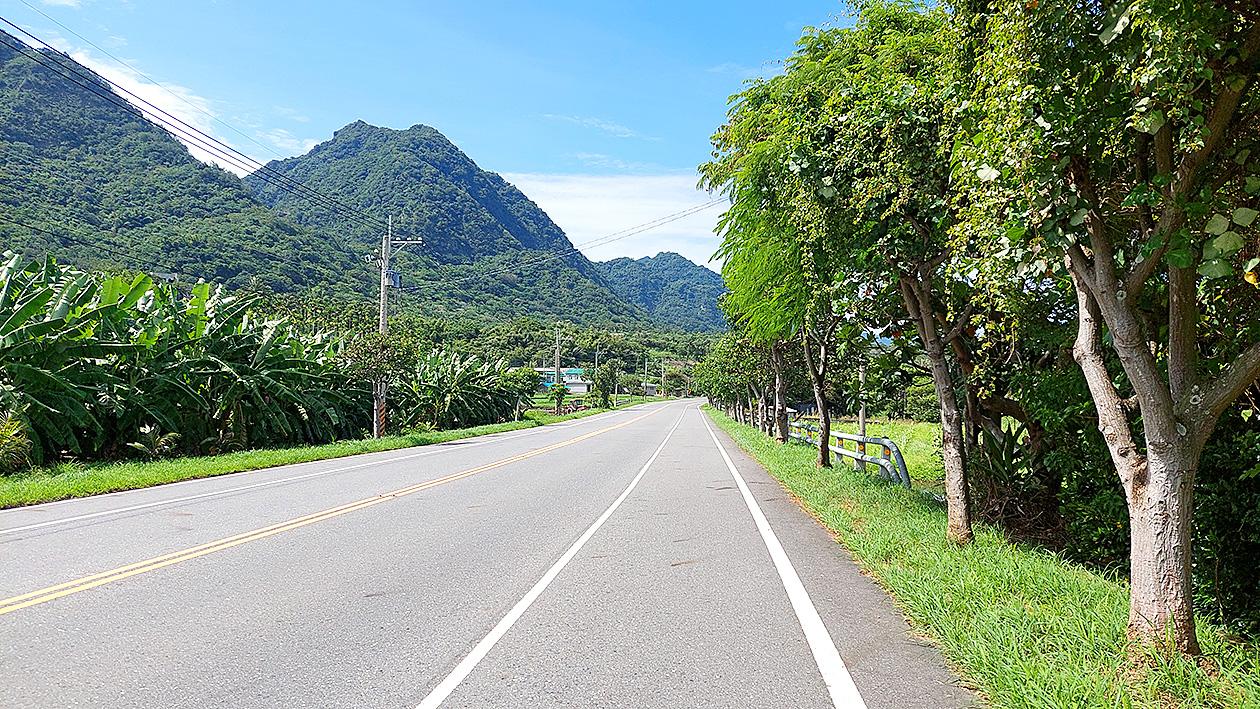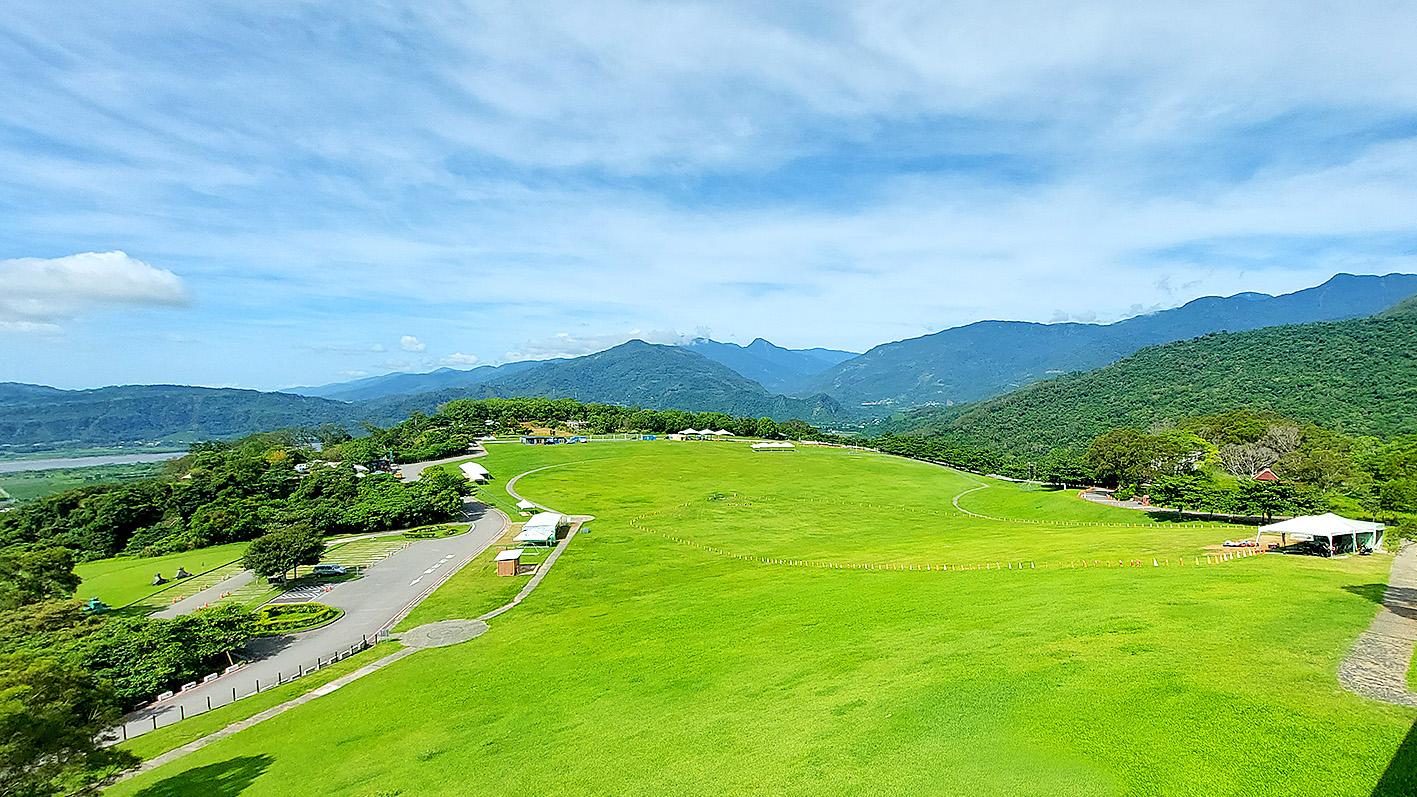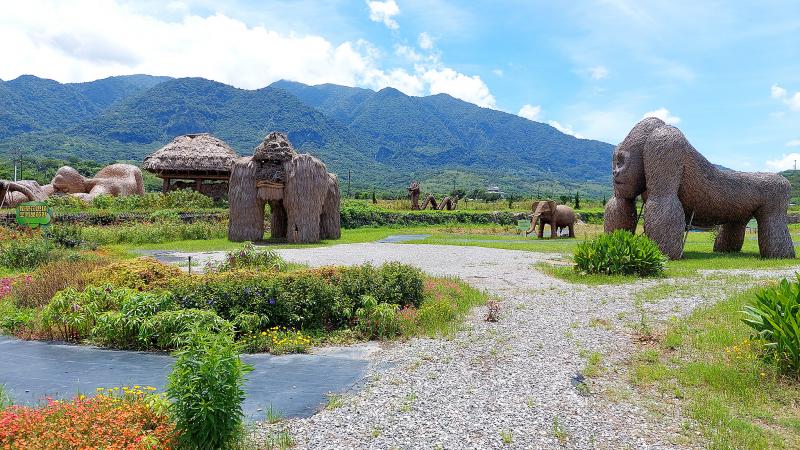The plan was simple: rent a scooter in Hualien, drive down Highway 11 to Taitung, and back up on Highway 9. This fairly comfortable two-day ride would take me through two of the nation’s more remote counties and along some of its most gorgeously scenic roads.
Of course, this trip can be made by tour bus, stopping at all brown-signed tourist hotspots along the east coast, while a car provides air-conditioned comfort. But riding a scooter offers a more direct connection to the land — the sound of crashing waves, the smell of the Pacific, the sumptuous views of mountains and sea — and its easy enough to pull off the road to check out that remote fishing village or unusual rock formation.
Despite the abundance of places to stop at, sights to see and attractions to visit, more than anything else I simply wanted to ride.

Photo: Andy Crosthwaite
RIDING THE COAST
For those not in the know, Highway 11 hugs the east coast, sometimes only a matter of meters from the ocean, and Highway 9 lies a bit further inland, separated from the water by a ridge of densely vegetated hills.
Plan to arrive in Hualien early. Hiring a scooter takes a little time (details below), and the ride to Taitung will take five to six hours without stopping.

Photo: Andy Crosthwaite
Almost as soon as you leave Hualien, you’re treated to wonderful coastal views with peaks and cliffs rising up steeply on your right and the Pacific Ocean stretching out to the horizon on your left. The experience only improves as you travel south and begin passing through the little, sun-drenched villages that flank the road. The houses here are so small and the pace of life seemingly so languid that it’s hard to believe this is part of the same country as Taipei, only a few hours up the road.
Come here when it’s overcast and you’ll find dark clouds hanging over these settlements and winds blowing up choppy, ominous waves on the ocean. When it’s bright, you’d swear that the sun will one day bake these villages out of all existence. Either way, you can’t help but feel awed by the overwhelming power of nature.
GORGEOUS TAITUNG

Photo: Andy Crosthwaite
Moving into Taitung County, you’ll come across some lovely tourist destinations. The first, about 55km north of Taitung City, is Sansiantai (三仙台), a rocky island which legend says once attracted the Taoist immortals Li Tieguai (李鐵拐), Lu Dongbin (呂洞賓), and He Xiangu (何仙姑).
Visitors can follow a trail around the island and take in the weathered rock formations and coastal vegetation. The real highlight, though, is the scalloped bridge that connects the island to the mainland. It’s interesting by day but incredibly photogenic at both sunrise and sunset, so if you’re nearby in the late afternoon, stick around and enjoy the view.
Siaoyeliu (小野柳) is just a few kilometers north of Taitung, and like Yehliu (野柳) in the north — Siaoyeliu simply means “Small Yehliu” — it features remarkable geological formations. It’s apparently the result of thousands of years of erosion wearing down the differing layers of rock, and if you want more information, check out the on-site tourist service center. What you need to know is that you’ll see rock arches, mushroom rocks and potholes large and small. It’s weird and wonderful, and stopping for a photo or two really won’t add much time to your journey.

Photo: Andy Crosthwaite
Taitung itself has been developed a lot in recent years, and there are now lots of hotels to stay in and restaurants to eat at. I spent the night at the Home Rest Hotel in the middle of the city — a clean and comfortable option, and at NT$1,451 including breakfast, it was good value for money.
The all-you-can-eat buffet at the Sheraton is fantastic, and on this trip, I ate at Wow’s Pangcha Cafe near the Railway Art Village. The village is a lively nightspot in the middle of the city and has art installations, a craft market, street food and (in non-pandemic times) live music at Tiehua Music Village (鐵花村). I chose Wow’s Pangcha because of its mouth-watering menu, and I wasn’t disappointed with my selection. Their pizza was among the best I’ve eaten for a long time, and I will be going back.
UP THE EAST RIFT VALLEY

Photo: Andy Crosthwaite
As I left Taitung the following morning, I could see the towering Central Mountain Range that forms one side of the East Rift Valley, along which Highway 9 runs. It’s worth noting that this highway, like Highway 11, is generally wide and almost always well-maintained. Even in the pre-pandemic days when scores of tour buses made their way up and down these routes on a daily basis, riding a scooter here has never felt intimidating. Obviously, you still need to be careful, but, unlike on the Suhua Highway between Yilan and Hualien and pretty much any highway on the west coast, I’ve never felt stressed on these roads.
Back on the road, the fertile East Rift Valley offers views of verdant rice fields, banana trees and other vegetation. This is only separated from the blue sky by a dark green band of forested mountains and hills. The scenery is resplendent, and it just goes on and on for kilometers on end.
Ruisui Ranch (瑞穗牧場) and Chulu Ranch (初鹿牧場) are two places where you can rest and properly take in the surroundings. Even better is the Luye Highland (鹿野高台). Just 25km north of Taitung, the highland is famous for its large grassy meadow, and it’s currently hosting the Taiwan International Balloon Festival (balloontaiwan.taitung.gov.tw). The event runs until Sept. 12.
Ultimately, the east coast has plenty of famous attractions that visitors will go out of their way to visit, but to me, the real magic of the area doesn’t lie in these hotspots. Instead, I will always try and take in the land as a whole, riding along these highways and stopping wherever and whenever I please.

We lay transfixed under our blankets as the silhouettes of manta rays temporarily eclipsed the moon above us, and flickers of shadow at our feet revealed smaller fish darting in and out of the shelter of the sunken ship. Unwilling to close our eyes against this magnificent spectacle, we continued to watch, oohing and aahing, until the darkness and the exhaustion of the day’s events finally caught up with us and we fell into a deep slumber. Falling asleep under 1.5 million gallons of seawater in relative comfort was undoubtedly the highlight of the weekend, but the rest of the tour

Youngdoung Tenzin is living history of modern Tibet. The Chinese government on Dec. 22 last year sanctioned him along with 19 other Canadians who were associated with the Canada Tibet Committee and the Uighur Rights Advocacy Project. A former political chair of the Canadian Tibetan Association of Ontario and community outreach manager for the Canada Tibet Committee, he is now a lecturer and researcher in Environmental Chemistry at the University of Toronto. “I was born into a nomadic Tibetan family in Tibet,” he says. “I came to India in 1999, when I was 11. I even met [His Holiness] the 14th the Dalai

Following the rollercoaster ride of 2025, next year is already shaping up to be dramatic. The ongoing constitutional crises and the nine-in-one local elections are already dominating the landscape. The constitutional crises are the ones to lose sleep over. Though much business is still being conducted, crucial items such as next year’s budget, civil servant pensions and the proposed eight-year NT$1.25 trillion (approx US$40 billion) special defense budget are still being contested. There are, however, two glimmers of hope. One is that the legally contested move by five of the eight grand justices on the Constitutional Court’s ad hoc move

Stepping off the busy through-road at Yongan Market Station, lights flashing, horns honking, I turn down a small side street and into the warm embrace of my favorite hole-in-the-wall gem, the Hoi An Banh Mi shop (越南會安麵包), red flags and yellow lanterns waving outside. “Little sister, we were wondering where you’ve been, we haven’t seen you in ages!” the owners call out with a smile. It’s been seven days. The restaurant is run by Huang Jin-chuan (黃錦泉), who is married to a local, and her little sister Eva, who helps out on weekends, having also moved to New Taipei